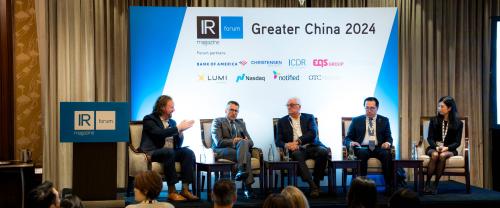Ian Matheson provides insight on the local IR landscape
This article was produced in association with ELITE Connect. It was originally published on the ELITE Connect platform.
Disclosure, regulation and declining analyst numbers are all affecting the current investor relations landscape in Australia. We hear from Ian Matheson, CEO of the Australasian Investor Relations Association, who gives more insight into the hottest local topics.
ELITE Connect: What are the main regulations affecting the IR landscape in Australia now?
Ian Matheson: Following the Newcrest Mining court case nearly three years ago, which saw the company fined A$1.2 mn ($917,000) for breaching continuous disclosure rules, the importance of the continuous disclosure regime – and especially the related and updated Guidance Note 8 (GN8) of the Australian Securities Exchange listing rules – has become even more important.
One of the key areas of focus in the updated GN8 is the relevance of analyst consensus estimates and whether companies give guidance or not. As a result, the focus on managing the market’s expectations in the correct manner has become the critical issue for investor relations.
EC: Is there any regulation in the pipeline affecting Australian IR activity?
IM: The only regulatory change in the pipeline of relevance to IR in Australia is a proposal to take a further step along the path of electronic communication with shareholders. The federal government is examining whether to make the notice of an AGM an opt-in situation to receive hard copy; otherwise the default will become electronic, like with annual reports.
As people change the way they consume news content, this proposal will make digital communications even more important.
EC: What impact is European regulation such as Mifid II having on Australian IR activity?
IM: There is a growing awareness ofMifid II. Many major Australian companies have UK shareholders, which have in turn written to investee companies making them aware of these impending changes. In some cases, these investee companies have said they already don’t use brokers for organizing meetings so if an Australian company is taking a roadshow to the UK, it should approach the fund manager directly or go through one of the new portals.
EC: What is the biggest current challenge to Australian IR activity?
IM: One of the biggest current challenges is the continuing downsizing of the investment banks, including their equity research teams. Some of the banks and stockbroking houses have lost many of their senior analysts and fewer, more junior analysts now have to cover more stocks. We understand there are 40 percent fewer equity analysts with more than five years’ experience than there were five years ago.
This presents many challenges for IROs, including getting some analysts to update their models whenever companies release new material information. This delay in analysts updating their forecasts can also affect the reliability of consensus estimates.
Another growing and important issue for IR in Australasia is the increasing focus on ESG issues, with remuneration issues and carbon emissions topping the agenda.










